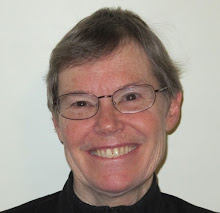For this month's column I've written a piece called
Accidental discoveries and unexpected finds. In it, I include a long quote from my cousin Janet Derouin's history of Pine Knoll, the home in Danvers built by our great-grandfather Andrew Nichols. The home existed from 1861 to 1975, when it succumbed to arson. One day in the Pine Knoll attic, after the great aunts had died and no family members lived there anymore, Janet made a discovery.
" Several months before the fire I was in the
cavernous attic helping my father, who was one of the heirs, choose a blanket
chest as his part of the division of household goods. It was to be sent to my
brother in California, and I felt sorry that he and his wife weren’t with us to
choose for themselves. As we started to leave, having made our selection, I
noticed a cardboard candy box of undetermined age, with STANLEY neatly printed
on the top in letters large enough to catch my eye.
Since Stanley
was the middle name of my grandfather, William Stanley Nichols, as well as my
California brother, William Stanley Nichols II, my father and I decided to look
inside. I brushed years of dust off the top and untied the inevitable piece of
string, only to discover it was full of folded letters in little packets, each
one tied with a bit of ribbon. … I
examined the various bundles and realized the letters were just as they had
been originally put away, and I about to be the first, since that time, to slip
off the ribbons and read them!
To my great surprise I discovered they must have been put
in the box over one hundred years before, the bulk of them written by my
great-grandfather to his future wife, Elizabeth Perkins Stanley, during their courtship
days. She was his beloved Lizzie for whom he had built the cottage he named
“Pine Knoll” where I had found them. The
last one was written on the eve of his wedding day [1861].
As I read her
precious old letters I found that Andrew made frequent references to things
Lizzie had written in her letters to him, which I then had a consuming desire
to find.
During the
months that followed, my aunt, Janet Cutler Nichols, and I moved hundreds of
old papers and letters from the Pine Knoll library to her home nearby, for safe
keeping and sorting. During the long hours that we read and sorted materials to
be donated to the Essex Institute, and other suitable repositories, I
constantly hoped to find the other half of my treasure. … All hope reluctantly
died away when every paper and letter had been rough sorted and the house
itself was gone, whatever treasures remaining inside its walls, now nothing but
ashes.
In the year
after the fire, Janet and I continued to work at least one day a week, getting
the letters and documents into proper order for donation. It was a tedious,
exacting job and at the end of one of those days I was tidying up when a
leather folder slipped from my hands, spilling a number of ancient deeds all
over the floor. When the folder landed it came to rest inside out. As I gingerly
picked it up, lamenting my “butter fingers,” I saw that it had a pocket on
either side, and they met in such a way as to be invisible, unless the folder
was turned back on itself, as it had become in the fall.
I reached into
one of the pockets and pulled out a copy book. It was filled with copies of
Andrew’s courting letters in Lizzie’s candy box. They were written in pencil by
the same hand and numbered in the order they were sent. Stunned by this
discovery, I reached into the other pocket, afraid to hope for what I wanted to
find. It contained Lizzie’s letters to him!
I had had them all the time!
At that moment
came my determination to sort and type the letters and diaries still in
existence that tell the story of Pine Knoll so it might be enjoyed by the
generations to come.”
Janet Derouin did type those letters and spent many years researching family history and writing down family stories, but her project has not been published. Nor is it finished. She did finish the part about Lizzie and Andrew's four-year courtship and why it had to be so secretive. (Family opposition...) In spite of the obstacles, Andrew married Lizzie in 1861 and brought her to Danvers, where they raised eight children and continued to love each other for 61 years!
Janet, now 83, wants to pass this project and all its associated files (paper and computer) to me for safe keeping and, perhaps, continuation or publication in some form. I am pondering options. I agree with Janet that this special love story should be shared.



